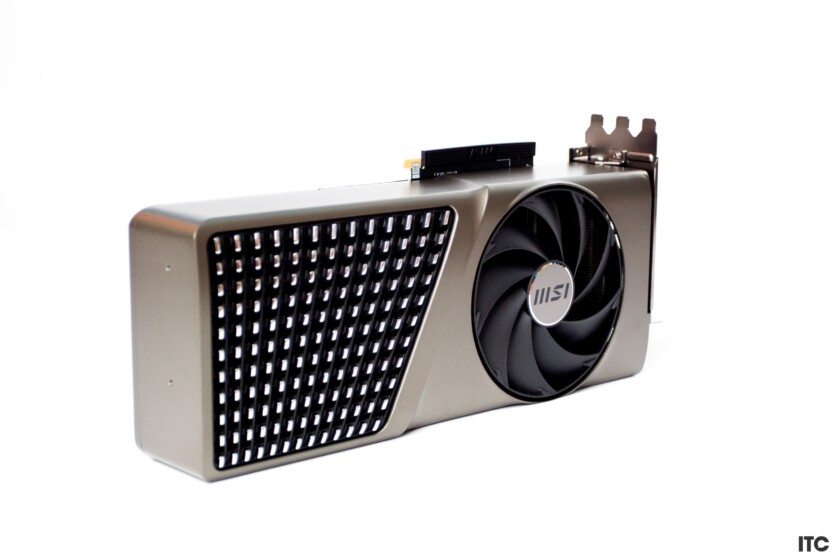
The system requirements for video games are growing every year, and marketers are only adding fuel to the fire to motivate gamers to upgrade their computers. In this article, we’ll figure out how much memory a video card will really need in 2024. We’ll consider modern AAA games, popular online projects, and immortal hits that are still actively played. We will refer to real test results in ITC reviews and make comparative charts.
Content
Briefly about VRAM and the artificial hype for large volumes
VRAM (video memory) is soldered on the graphics accelerator board and is used to store textures, shaders, polygons, and all other data in the game and beyond. Any program on a computer consumes both RAM and video memory. Even displaying a graphical interface on the desktop also requires VRAM.
Unlike RAM, video memory has a higher bandwidth, but its capacity cannot be simply increased by adding new slots. Memory chips are soldered to the video card itself, so you can forget about upgrading.
This makes you choose a video card more cautiously, and many newcomers after watching «horror stories on YouTube» start to doubt whether they will have enough video memory. Cunning video bloggers help manufacturers to sell video cards more actively, so they tell nonsense like: «8 GB video cards are dead, don’t buy them in 2024!».
This is just an attempt to catch the hype among a large audience of computer enthusiasts, which has nothing to do with reality. In real-world testing conditions, it turns out that you can comfortably play with 8, 6, 4, or even 2 GB of video memory buffer, but first things first.
In this article, we will dispel the myths with reference to our own editorial reviews of modern graphics cards, and at the end of the article we will answer the question: «How much memory does your video card really need in 2024?».
Games played by millions
A large video memory buffer can accommodate higher quality textures, although not all video games require a lot of VRAM. Most users are faced with a situation where they rely on the capabilities of the GPU chip, the processor, and not the video card memory. For example, the AMD Radeon RX 580 8 GB model easily accommodates high-quality textures of modern video games in its buffer, but in Alan Wake 2 it works in «slideshow» mode.
In short, computer video games can be roughly divided into two categories:
- AAA games (usually single-player) with high system requirements and luxurious graphics;
- Online esports games with low system requirements and simple graphics.
While in the first category, the video card is of great importance, for the most popular video games that are played hundreds (or thousands) of times more than AAA, the simplest budget-class graphics accelerator is enough. Conditional 7-10 year old video card with 2-4 GB video memory is still relevant for the vast majority of video games on the Steam top chart.
Let’s take a look at a few examples from a relatively modern Asus Dual Radeon RX 6400. It’s currently the weakest current AMD graphics card with 4 GB of video memory, but it’s enough to play games comfortably resolution Full HD when it comes to eSports video games.
Conventional notation:
- COMP — esports graphics settings;
- LOW — low graphics settings;
- MED — medium graphics settings;
In the game (the second most popular on Steam) DOTA 2 with a 1920×1080p monitor and paired with an AMD Ryzen 9 7900 processor, we get 170-240 FPS, depending on the scene. The video card is not fully utilized, nor is the VRAM buffer. On average, it takes 2000-3000 MB video memory.
Fortnite requires a little more than 2000 MB VRAM. In some scenes, this value can be as high as 3000 MB, but that’s about it. The graphics settings are, of course, minimal with high textures because Ultra graphics in such games only hinder the ability to defeat opponents.



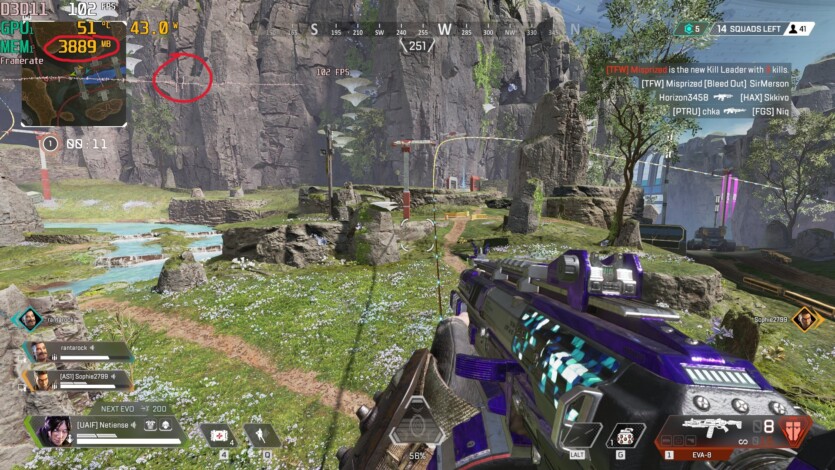
Another popular game Rocket League is also not demanding on video memory – it’s enough 2500-3000 MB for comfortable gaming in Full HD.
In Apex Legends, the requirements are much higher, so you won’t be able to set the maximum textures with 4 GB of RX 6400. All graphics settings are at a minimum, and the textures are medium, and we get almost full buffer load 3800-3900 MB.
For a comfortable game, it is better to set the textures of the worst quality because this can cause microfreezes. When there is not enough VRAM, the picture loses its smoothness. This can be clearly seen in the screenshot, where peaks in the frame time graph sometimes slip through.
So, if you want to look at high-quality textures and get a perfectly smooth picture, Apex Legends requires a video card with at least 6-8 GB VRAM. Everything seems to be clear with eSports games — low video card requirements and complete dependence on the processor, but what about AAA games?



The RX 6400 is still good enough for many AAA games, but only if they are well optimized (Starfield will bring this card to its knees). High-quality games like Forza Horizon 5, Red Dead Redemption 2, and Cyberpunk 2077 don’t require a lot of VRAM, so you can play with 4 GB buffer in the Full HD.
That is, 4 GB as of 2024 is the absolute minimum for a universal gamer if you want to play modern (well-optimized) AAA console video games, not just esports projects. Of course, we are talking about Full HD only, no more.
We can briefly summarize the conclusions for fans of popular online games that hold almost the entire audience of PC gamers:
If you are interested in popular online video games such as World of Warcraft, Dota 2, Couter Strike 2, League of Legends, Valorant, Fortnite, Rocket League, Minecraft, Roblox, then 4 GB of video memory is more than enough (RX 6400, RX 6500 XT, GTX 1050 Ti, GTX 1650), and sometimes even 2 GB (notional GTX 1050) in 2024.
Fans of such games should also pay attention to APUs from AMD. The best ones are currently considered to be AMD Ryzen 5 8600G and Ryzen 7 8700G, which we reviewed recently. In this case, the amount of video memory will depend on the amount of ROM, so for integrated solutions it is better to take RAM with a margin to put high-quality textures.
How much video memory do you need for modern video games?
Before we go through the tested graphics cards, let us remind you of an important point. It is not necessary to chase the maximum graphics by buying only top-of-the-line hardware. The quality of the picture on the monitor screen has almost no effect on the enjoyment of the game.
This has been discussed in detail in editorial analytical articles:
- Ultra graphics in games — money down the drain? Let’s find out if the maximum ultra settings are really worth it
- Nobody needs beautiful graphics: why does nobody play AAA projects?
- Benchmarks instead of games, or how to get out of computer slavery: why the PC is an unhappy platform
Just like RAM, there is no such thing as too much video memory, but there is a reasonable limit to buying. Let’s figure it out by analyzing different video games in 1080p, 1440p, and 2160p resolutions.
For the analysis of demanding AAA titles, we took data from reviews of these graphics cards:
- Nvidia GeForce GTX 1660 Super 6 GB;
- Nvidia GeForce RTX 4060 8 GB;
- Nvidia GeForce RTX 4070 12 GB;
- Nvidia GeForce RTX 4080 Super 16 GB;
- Nvidia GeForce RTX 4090 24 GB;
- AMD Radeon RX 7600 8 GB;
- AMD Radeon RX 7700 XT 12 GB;
- AMD Radeon RX 6950 XT 16 GB;
- AMD Radeon RX 7900 XT 24 GB;
Symbols on diagrams:
- COMP – esports graphics settings;
- LOW – low graphics settings;
- MED – medium graphics settings;
- HIGH – high graphics settings;
- ULTRA – maximum graphics settings;
- RT/PT – Ray Tracing and Path Tracing;
- DQ/B/P – DLSS Quality, Balance, Performance;
- FSQ/B/P – FSR Quality, Balance, Performance;
- FG – Frame Generation;
Full HD 1920×1080 6-8 GB


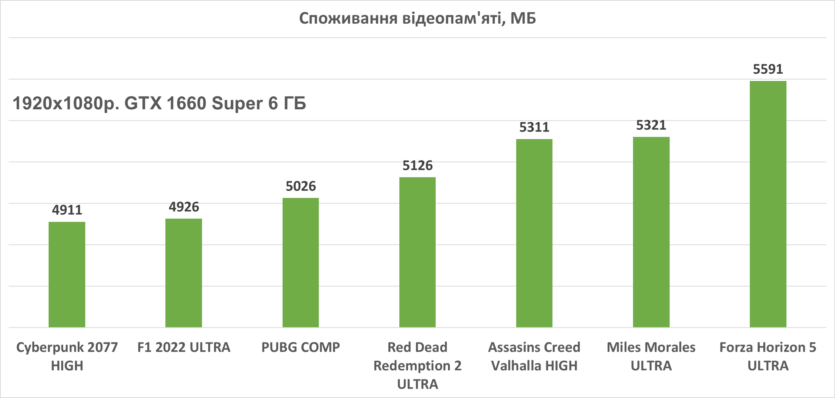
According to Steam statistics, most gamers play with Full HD, so it is still the main resolution of 2024. For this resolution, the conditional GTX 1660 Super seems to be enough for most video games, if you don’t take into account the most demanding hits. If 6 GB of memory will not be enough, we simply drop to the medium or low profile of graphic settings.
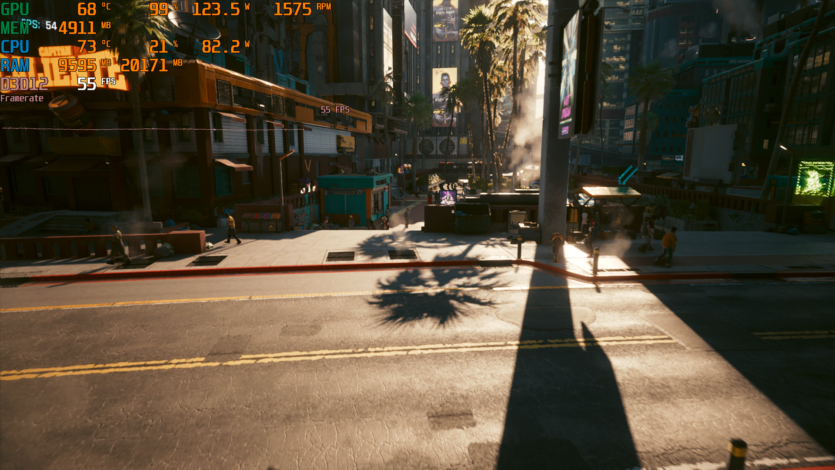


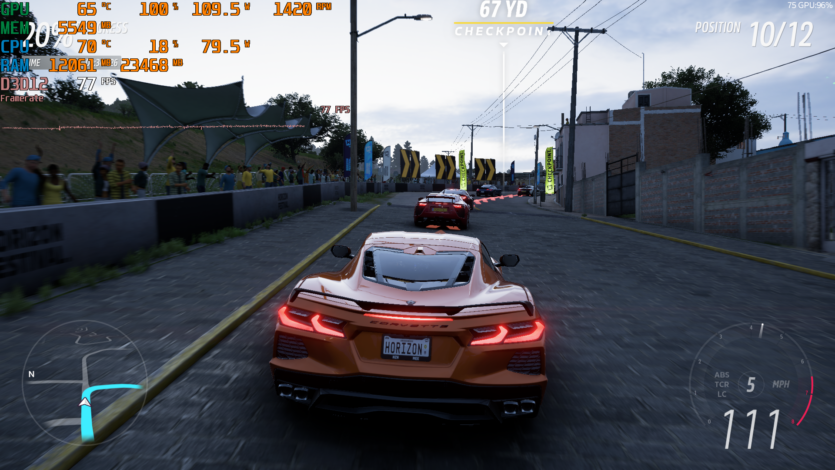
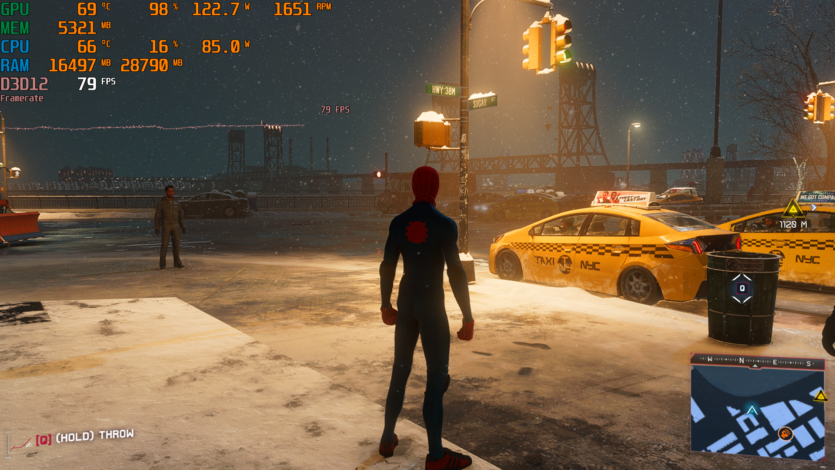
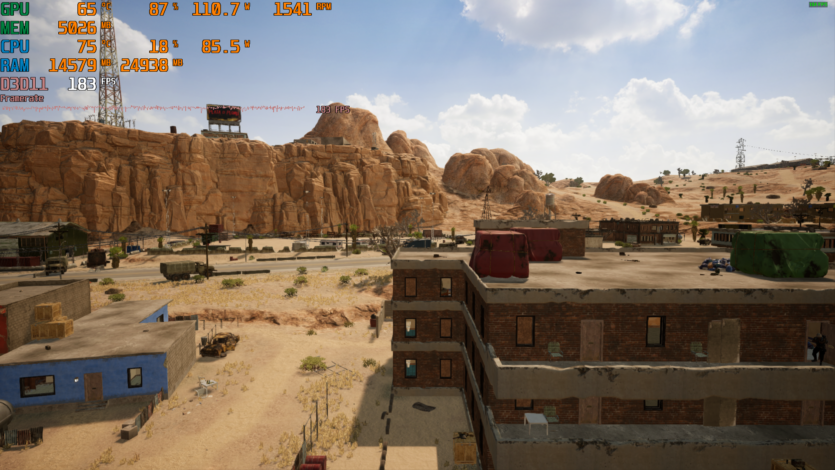


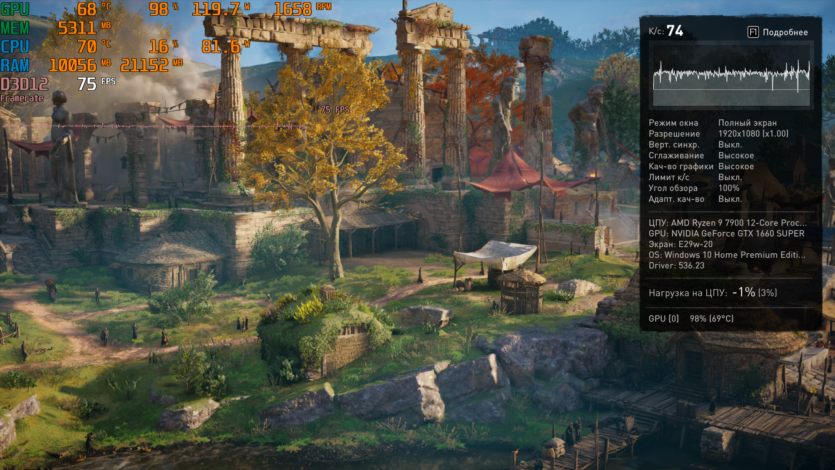
Video card RTX 4060 supports frame generation, and this is where it gets interesting. The technology is really great, worthy of attention, but Frame Generation requires more memory. That is why you can often see the consumption of 6000-7500 MB if you enable this technology.
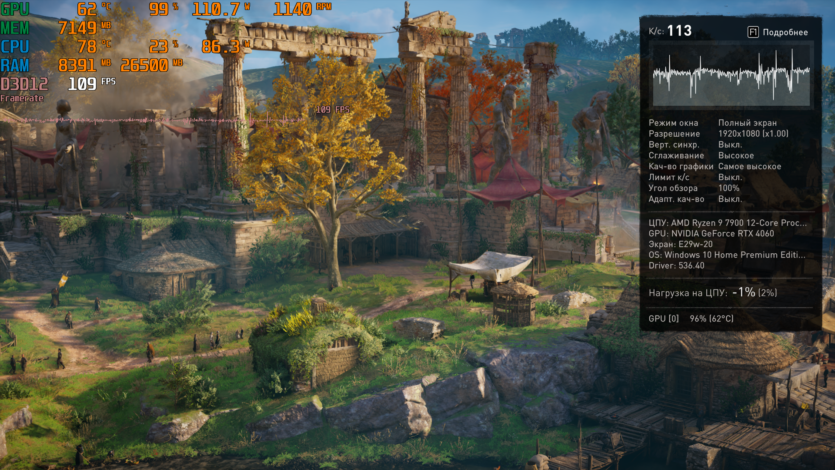
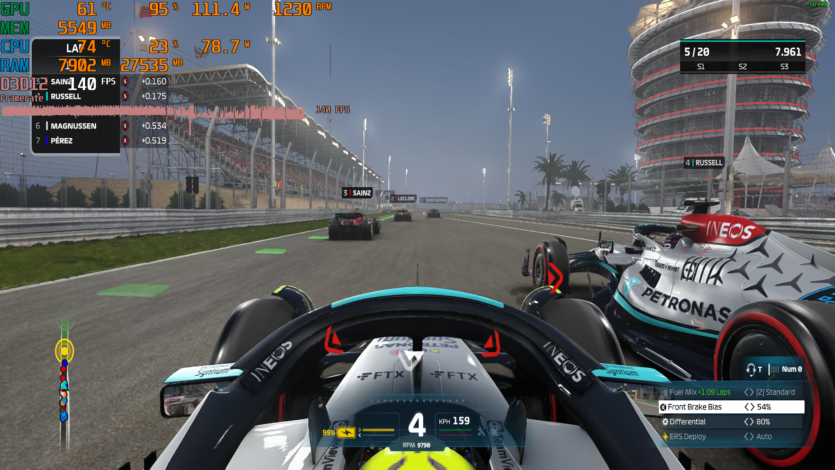

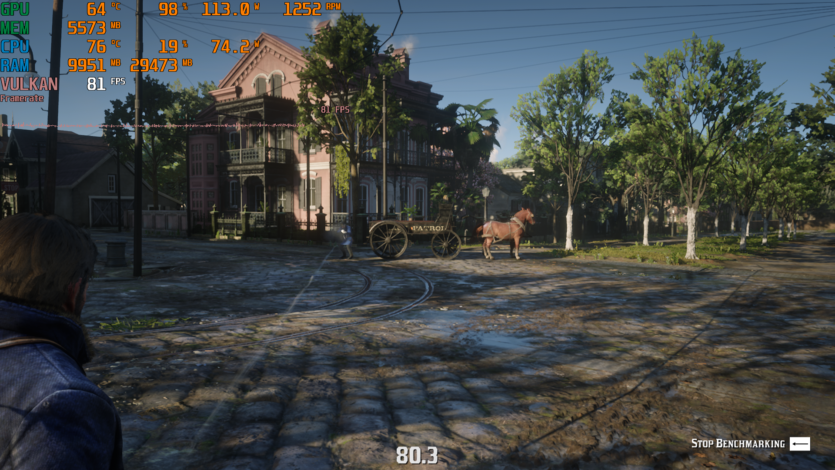
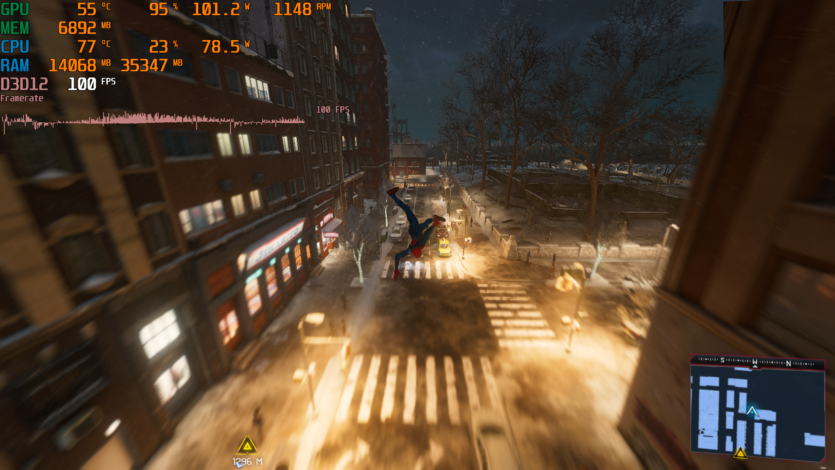
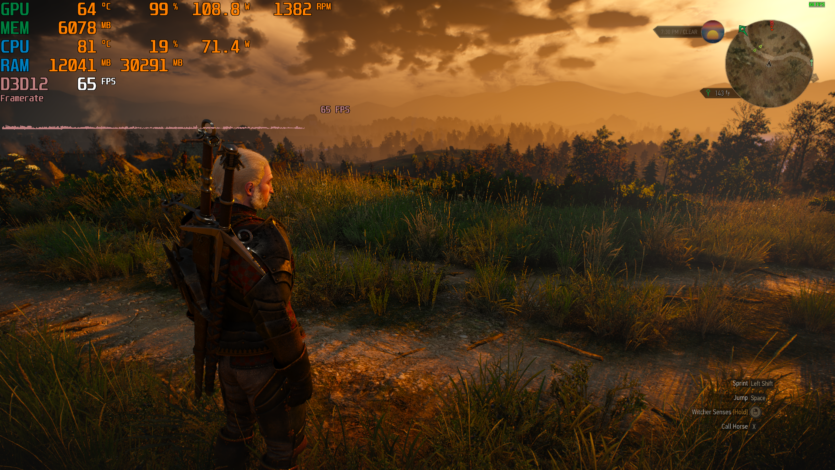

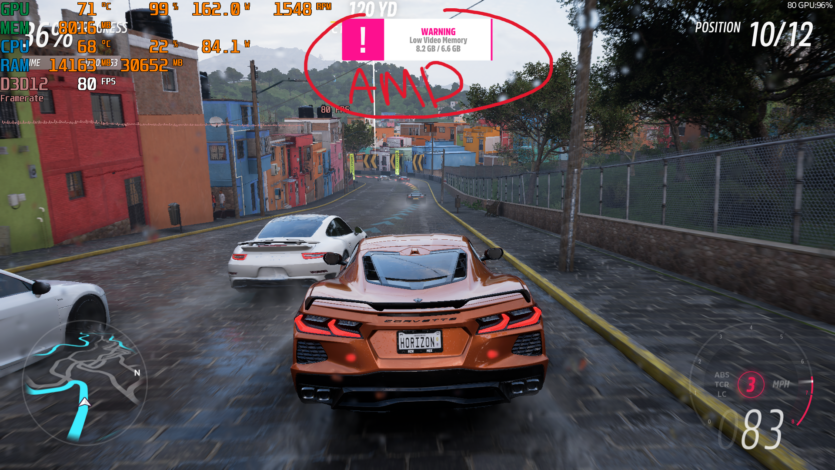
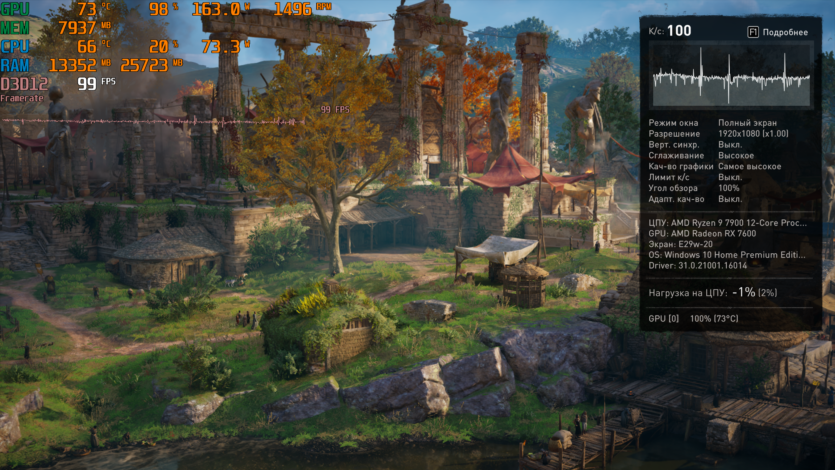
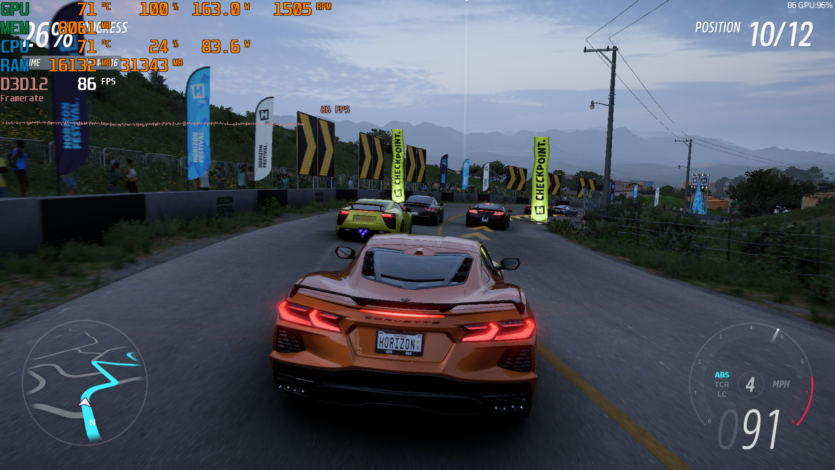
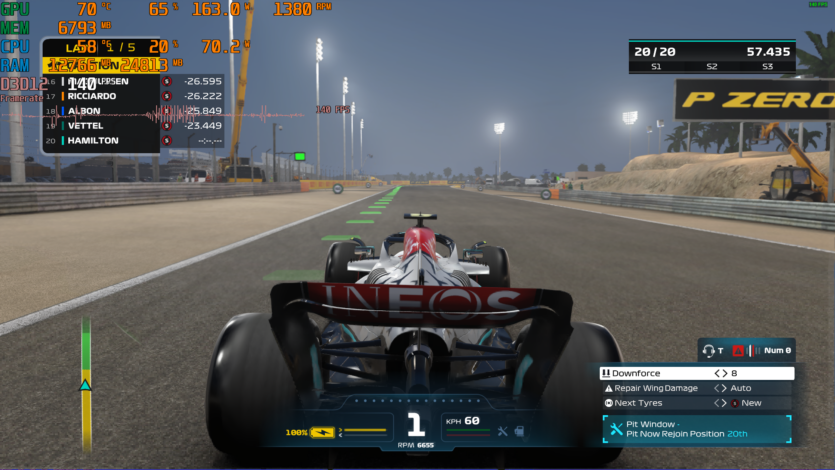



In some cases, the video memory for the frame generator will be insufficient, which will result in friezing. In such situations (rare), it is better to disable FG and play with «fair» FPS. Similarly, ray tracing consumes additional megabytes of VRAM, but Ray Tracing «eats up» frame rate even more.
An interesting fact: Nvidia video cards consume less VRAM than AMD competitors to process identical scenes in most games. This affects the smoothness of the picture. For example, the RTX 4060 feels comfortable where the RX 7600 warnings about memory deficit start (Forza Horizon 5).
Modern graphics cards suitable for Full HD: RTX 4060 Ti, RTX 4060, RX 7600 XT, RX 7600, as well as dozens of previous generations of Nvidia RTX 2000, RTX 3000, and AMD RX 6000, RX 5000.
Quad HD 2560×1440 8-12 GB
It turns out that the so-called «Full HD» graphics cards are enough for Quad HD monitors, especially when using AMD FSR, Nvidia DLSS, Intel XeSS upscales. Let’s analyze the video memory consumption at this resolution using the example of video cards of different classes.
On average, a typical AAA game at 2560×1440p resolution requires 6000 to 8000 MB of video memory, but with the use of ray tracing or frame generation technology, this figure can grow to 10+ GB.
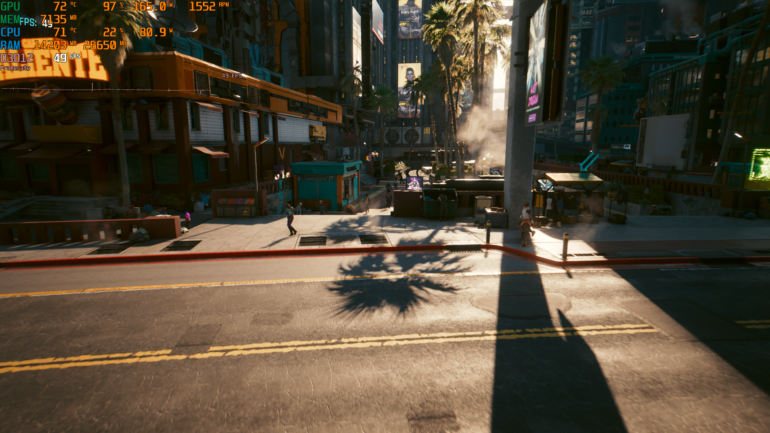
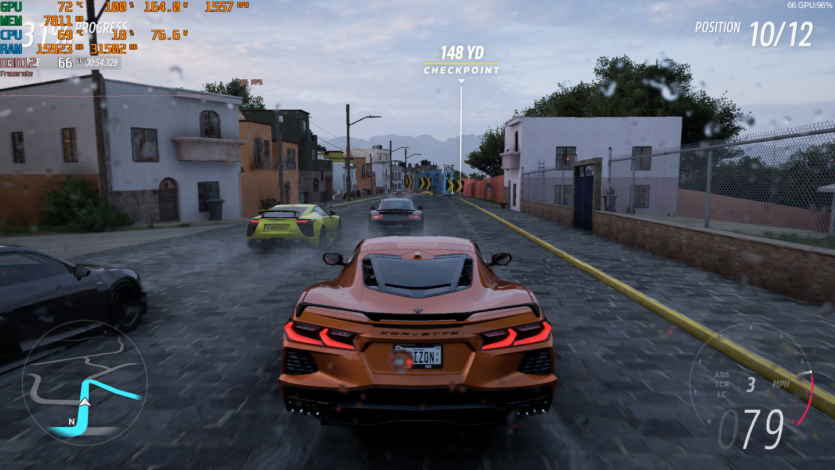
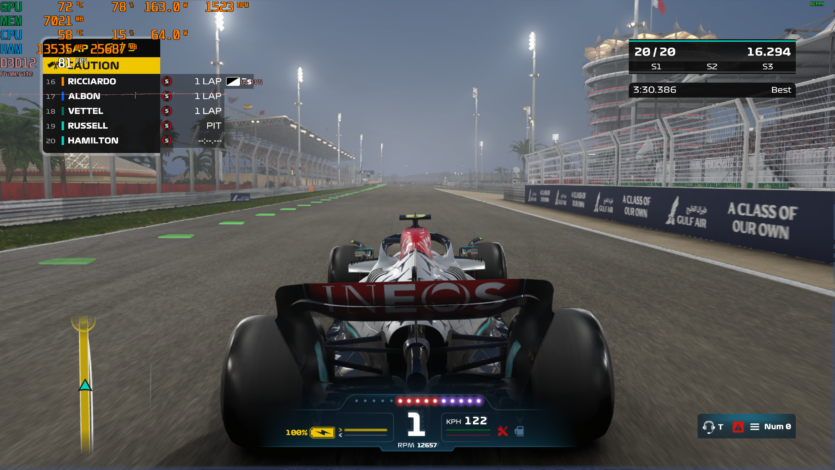



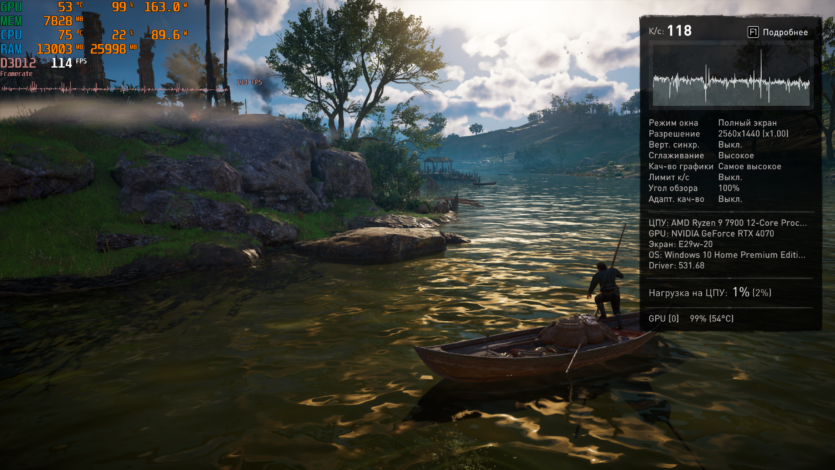
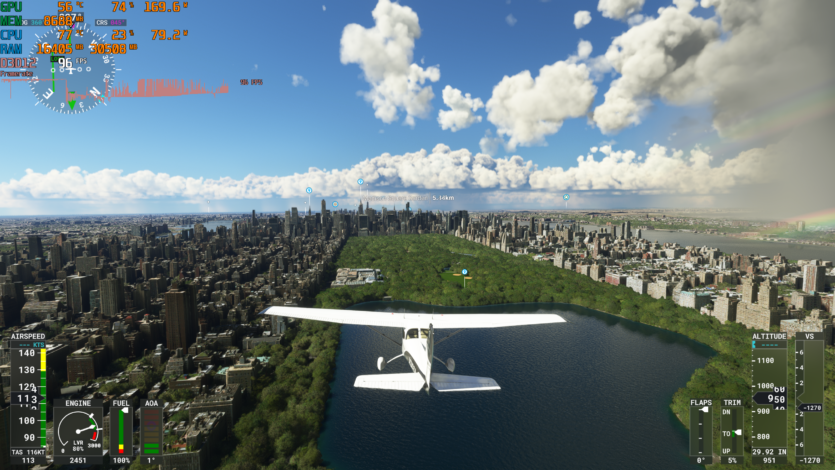
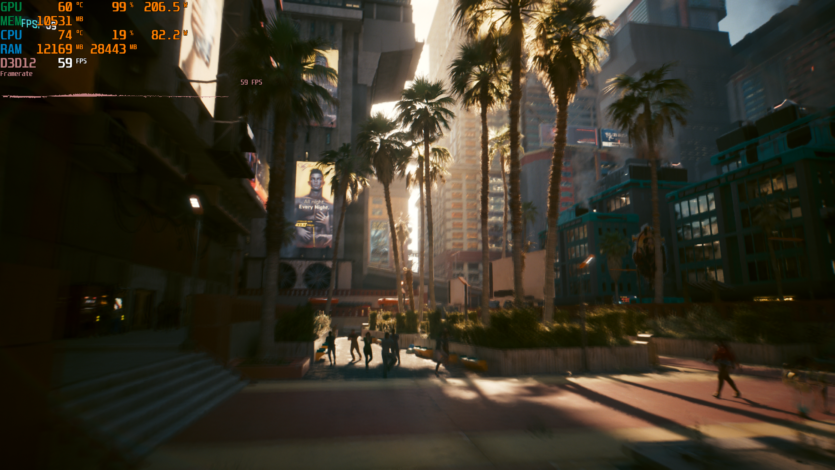
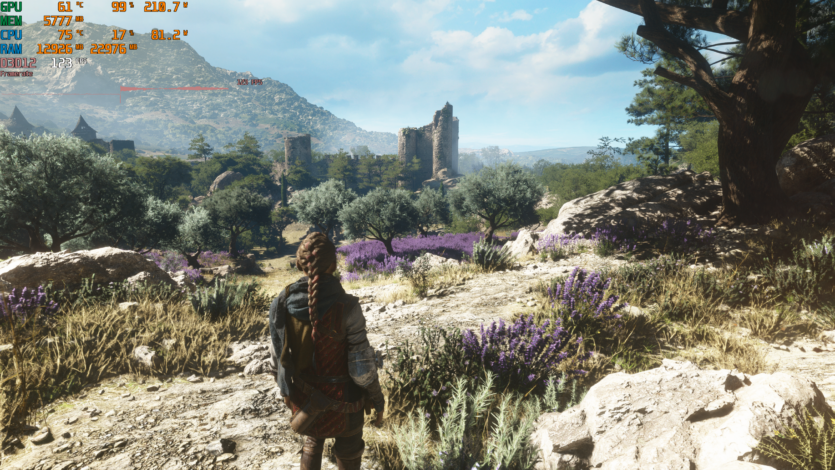

In other words, video cards with a 12 GB buffer are the golden mean and the most balanced solution as of 2024. This also includes older solutions of previous generations: RTX 3080, RTX 3080 Ti, RX 6700, RX 6700 XT.
DLSS/FSR antialiasing should not be neglected, as it works very well in some games. For example, in Call of Duty Warzone with the upscale, the clarity only increases, as does the FPS. For Quad HD monitors, you can confidently set the Quality preset, and a nice bonus will be less VRAM consumption.
Modern graphics cards that are suitable for Quad HD 2K: RTX 4070 Ti Super, RTX 4070 Ti, RTX 4070 Super, RTX 4070, RTX 4060 Ti, RTX 4060, RX 7800 XT, RX 7700 XT, RX 7600 XT, RX 7600.
Ultra HD 3840×2160 12-16 GB
As you can see from the statistics, 90% of games have enough 8-10 GB and then at a very high-resolution and maximum graphics settings. In fact, 16 GB as of 2024 is «4K Ultra HD Overkill» with room to spare (and room for poorly optimized, poorly made games), not to mention the AMD Radeon RX 7900 XT 20 GB, AMD Radeon RX 7900 XTX 24 GB, and Nvidia RTX 4090 24 GB.




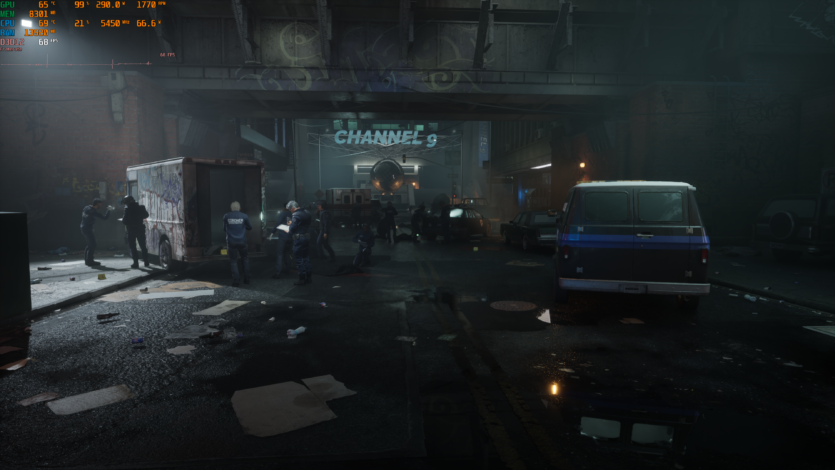
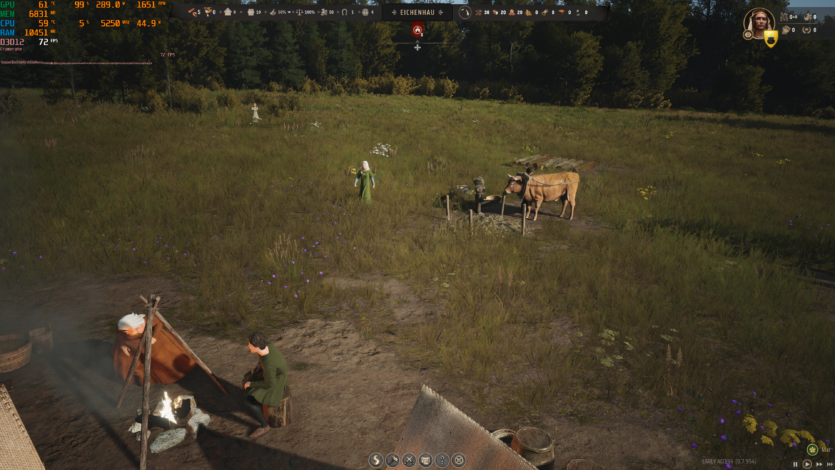






Of course, there are a few video games that take more than 16 GB in 4K with a conditional RX 7900 XTX, but, firstly, there are very few of them, and secondly, this consumption means nothing. For example, Diablo IV is famous for its appetite for VRAM, but it works stably with 8 GB, 12 GB, 16 GB video cards.
Also, let’s not forget that ultra customization in AAA games is only useful for video card vendors, not players because you don’t have to stubbornly crank all the graphics sliders to the maximum to enjoy the game.
Modern graphics cards that are suitable for Ultra HD 4K: RTX 4090, RTX 4080, RTX 4080 Super, RTX 4070 Ti Super, RTX 4070 Ti, RTX 4070 Super, RTX 4070, RX 7900 XTX, RX 7900 XT, RX 7900 GRE, RX 7800 XT, RX 7700 XT.
Multiple x3 Ultra HD 3840×2160, 8K 7680×4320 20-24 GB
Although the era of mass 4K has not yet arrived, you can already find 8K TVs in stores. For the resolution 7680×4320 pixels requires much more video memory, so this is exactly the case when it can be useful 20-24 GB VRAM.
Some people will call it a waste, but if the video card is capable of running AAA games at 7680×4320 on a 100-inch screen with a nice frame rate, then why not? For 8K, a huge buffer with 24 gigabytes of VRAM will not be superfluous, although for 4K it is definitely redundant.
Another scenario of complete utilization 16, 20 or 24 GB video memory are gaming systems with multiple monitors. This fetish is popular among fans of car simulators or fans of Microsoft Flight Simulator 2020.
Three Ultra HD 4K monitors will definitely increase the consumption of video memory, as the resolution will become 11520х2160р. With three Super Wide Quad HD monitors (10320×1440p) of the GPU chip will also be difficult.
Modern graphics cards suitable for Ultra HD 8K or multi-monitor systems: RTX 4090, RTX 4080 Super, RTX 4080, RX 7900 XTX, RX 7900 XT.
Conclusions and recommendations
A lot of video memory is good, but you shouldn’t chase this parameter. There are much more important characteristics, such as GPU chip speed, memory bandwidth, power consumption, hardware support for unique technologies, noise level, physical dimensions, etc., that take precedence over buffer size alone.
So, to summarize the optimal, recommended volumes for different monitors:
- Full HD (eSports) 2-8 GB;
- Full HD 6-8 GB;
- Quad HD (2K) 8-12 GB;
- Ultra HD (4K) 10-16 GB;
- Super/Ultra-Wide 4K/8K 16-24 GB;
For a comfortable game of esports video games (not all, but most), there are enough 4 GB video memory, as well as for most AAA titles released before 2020 on medium-high graphics settings, sometimes with low textures.
For fans of AAA video games 6 GB is still enough with some compromises in the most demanding projects if a gamer is playing behind a 1080p monitor, but it’s definitely not worth buying a new video card with this capacity in 2024.
The best choice for owners of Full-HD monitors is the volume of 8 GBwith which you can also play in Quad HD with DLSS/FSR (the upscale reduces VRAM utilization). Of course, the conditional Nvidia RTX 4060 will «rest» in esports games with a load of 2-3 GB VRAM in DOTA 2 or Valorant, but with a frame generator and ray tracing, 8000 MB is filled quickly.
For confident and uncompromising Quad HD gaming, the volume is best suited for 12 GB. The owner of such a video card will easily play the most demanding video games with high-quality textures for a long time, and you can also play Ultra HD with 12 GB of VRAM, if the chip performance allows it.
16 GB, 20 GB, 24 GB — such volumes (as well as the video cards themselves) are designed for 4K gamers, and some models also have a huge reserve for the future, filling up to capacity 50% of the volume VRAM in the most demanding video games of our time.
Owners of RTX 4090 or RX 7900 XTX may not change them for another 7-10 years at the current pace of development of the gaming industry. In 24 GB fits not just any game in 2024, but probably (judging by the trend) it will be enough for AAA projects in 2024. 2030-2035.











Spelling error report
The following text will be sent to our editors: